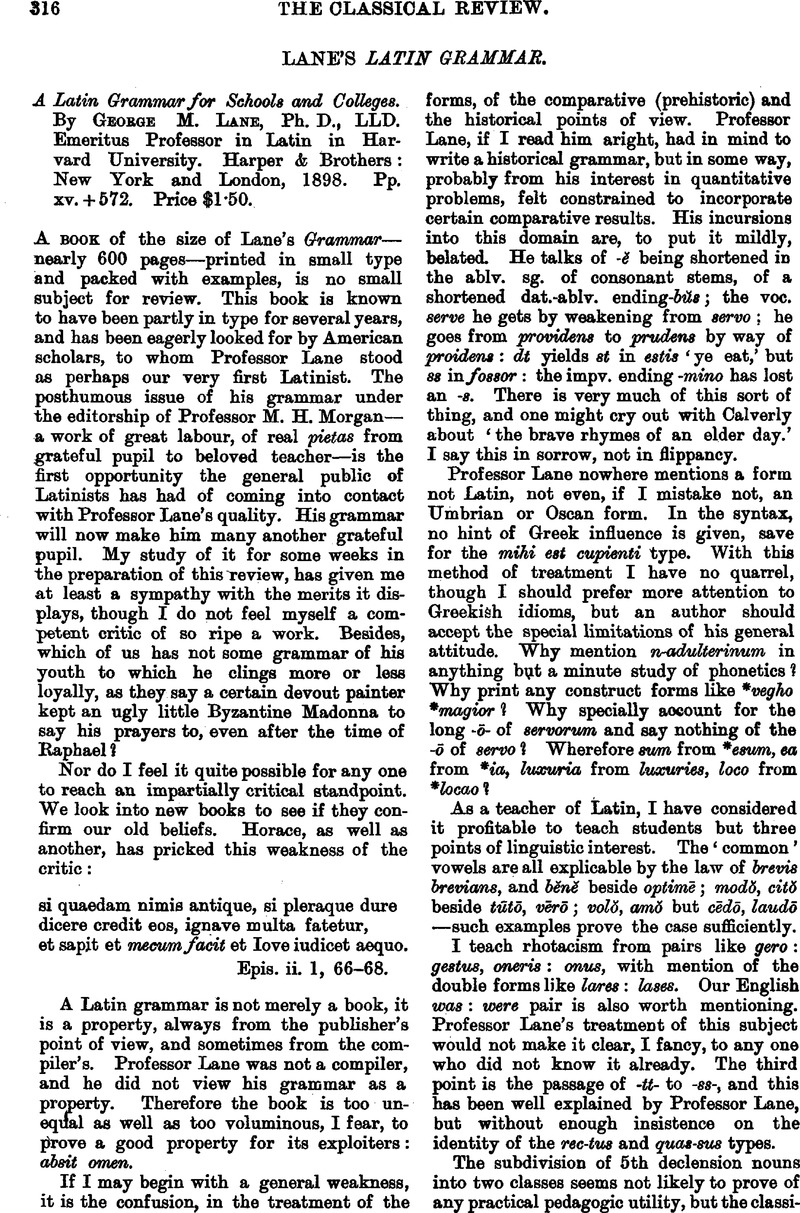No CrossRef data available.
Published online by Cambridge University Press: 27 October 2009

page 317 note 1 The references are to sections.
page 317 note 2 E.g., the contrasting examples in 1056, 1058, and in 1478: at 2075 (PI. Ep. 116, 331); the fine example for suboblique quod, PI. B. 735 (2319). Only one instance of ‘stript’ Latin, the jejune Rhodanus fluit—cited at 1062, to fix the sentencetype—has been noted.
page 319 note 1 Another, but in my opinion, less probable explanation is to be seen in most editions. The shift from infinitive to subjunctive (with ut) dependencies is not uncommon in Plautus (see Schnoor's ‘Zum Gebrauch von ut bei Plautus,’ footnote 42).
page 319 note 2 Bréal in his Commencements du Verbe, Mém. Soc. Ling. vol. xi. 273 seq., presents general points of view for the (Latin) subjunctive of convincing simplicity.
page 319 note 3 Elmer's remarks on this point (Cornell Studies, vi.) have been discussed in this Review by the editor.(vol. xiii. 66).
page 319 note 4 See Morris in Am. Jr. Phil. xviii. 285.
page 319 note 5 Bennett's examples of the videas type (Cornell Studies, ix. 41 seq.) fall into two classes—with transitions: (1) where two verbs balance in relative (conditional) sentences, and (2) in exclamatory sentences, where renderings like ‘I'd have you see, I wish you might see,’ are very pat. I trust I shall not be understood as objecting to potential renderings for Latin subjunctives where they are obviously convenient, but rather to any tendency to foist upon the primitive limbo of prehistoric syntax, from such scant and scattered evidence, a potential,—in fear lest some subsequent feat of sleight-of-hand and derring-do (may) derive awful consequences for historical syntax.
page 320 note 1 See Bryan's Latin Prose based on Caesar, p. 73.
page 320 note 2 This suggestion is at least as old as Barth's de infin. ap. scaen. poetas latinas, p. 11 (Leipzig, 1881), and has been pressed into service by Dittmar (l.c. § 490) for the entire accusative and infinitive construction. The ‘Infinitive of Intimation,’ with its subject made the object of the verb of saying, might be regarded as a transition stage: see also F. w. Thomas, above, vol. xi. 373 seq.
page 321 note 1 I have always explained exercitum instructum habet by ‘he has his army drawn up,’ and exercitum instruxit by ‘he has drawn up his army.’
page 321 note 2 We have in America no book like Cauer's admirable Die Kunst des Uebersetzens, and, so far as I know, there is none in English.
page 321 note 3 Not a quoted example, but representing, I am sure, genuine usage.